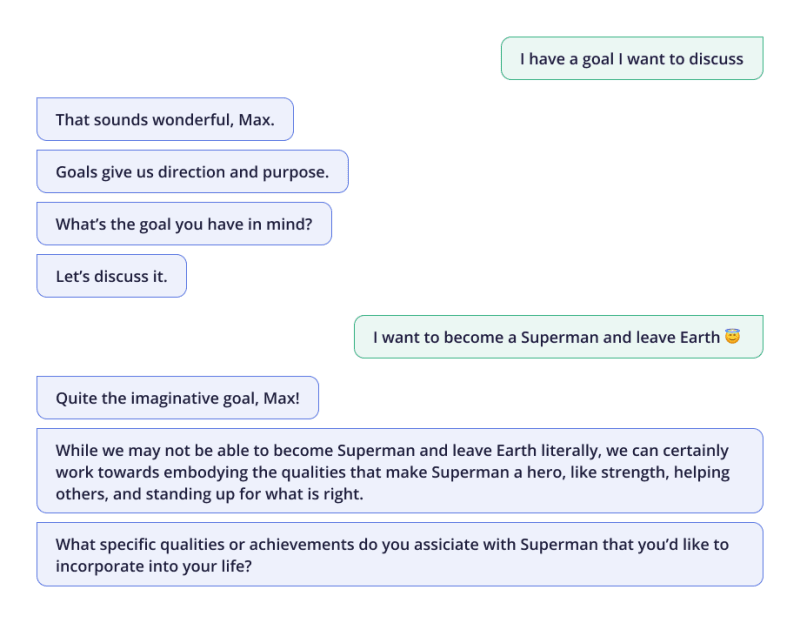Introduction
In today’s rapidly evolving business landscape, the integration of conversational AI is no longer a luxury but a necessity, transcending traditional customer service realms. Traditional chatbots, often constrained by static programming, have shown limitations in addressing the complex and diverse needs of modern businesses. This has led to various challenges: customer interactions lacking personalization, missed opportunities in sales and marketing due to rigid response frameworks, and operational inefficiencies in handling complex queries. The latest breakthrough in AI technology seeks to overcome these hurdles by dynamically tailoring ChatGPT responses to accurately reflect user intent.
The Leap Beyond Static Fine-Tuning
The conventional approach to fine-tuning AI models like ChatGPT, while effective in certain scenarios, falls short in emulating the dynamic and personalized nature of human conversation. To bridge this gap, the latest technology explores previously untapped areas, introducing a sophisticated mechanism that accurately identifies and responds to various user intents. This involves a deep analysis of user inquiries, allowing the system to discern underlying motivations and needs. The result is a more intuitive, engaging user interaction that goes beyond generic advice. This nuanced understanding and response mechanism mark a significant advancement in AI communication, bringing it closer to the complexity and adaptability of human interaction.
Tailored Business Integration and Case Demonstrations
The remarkable feature of this conversational AI technology is its exceptional adaptability, making it suitable for a wide range of business models and industries. Its initial deployment involves a compact, but effective set of intent-directive pairs, which can be expanded and refined over time. This scalability is crucial for businesses of all sizes, from small startups to large corporations, ensuring that the AI system evolves in tandem with the business. For instance, in the retail sector, the technology can personalize shopping experiences, while in technical support, it can provide precise troubleshooting assistance. Its versatility also extends to sectors like finance, where it can guide users through complex investment options, or healthcare, where it can assist in patient education and support. This adaptability is key to providing a level of interaction that resonates with the specific needs and values of each business and its customers.
This conversational AI technology seamlessly adapts to the unique needs of diverse businesses without requiring an extensive intent-directive base upfront. Initially, a compact, finely-tuned set is deployed, which can be expanded at any time by adding new intent-directive pairs. As the variety of customer intents grows, the system intelligently categorizes these into subcategories, maintaining streamlined and relevant dialogue pathways. Tailoring not only to function but also to scale. It ensures that whether it’s a start-up or an enterprise, the conversation reflects the business’s core focus and enhances user experience.
Consider, for example, a restaurant that deploys such chatbot to enhance customer service. The directives for a “Menu Inquiry” intent might trigger recommendations based on customer preferences, or combine promotions. On the other hand, a technical support bot for an electronics company might leverage directives to troubleshoot issues — “Battery Performance Concern” might lead to dialogue about power settings and usage patterns.
At the core of system’s success are the meticulously crafted intent-instruction directives. These serve not only as a navigational tool from expressed intent to strategic implementation but also adapt dynamically as user interactions evolve. You can observe this adaptive approach in Processica’s realisation of a Psychologist conversation bot. This bot’s directive for “Procrastination and Lack of Motivation” suggests: “Explore the Pomodoro Technique or embrace the Two-Minute Rule to break tasks into manageable chunks and defeat procrastination.” Such precise and personalized advice demonstrates the AI’s capacity to not only identify and register the user’s key concerns but also directly present viable solutions.
Fig 1. Example of user interaction with Psychologist assistant
In scenarios ranging from giving advice, such as the Psychologist bot example, to more complex interactions in different industries, the system consistently showcases its utility. It closely aligns with user intents and evolves with the addition of new intent-directives, ensuring the conversation remains in lockstep with both client and company priorities. Elevating dialogue to this degree of relevance markedly enhances user engagement, setting a new standard for customer-centric AI interaction.
Fig. 2. Data flow diagram for the enhanced method
Conclusion and Call to Advanced Adaptation
The integration of this advanced conversational AI across a diverse array of business sectors signifies a monumental shift in the digital landscape. This technology transcends the capabilities of traditional static chatbots, offering a nuanced, context-aware approach to user engagement. Its ability to understand and adapt to a wide variety of scenarios is a testament to its advanced deep learning algorithms and sophisticated intent recognition capabilities. This innovation is more than just a step forward; it is a leap towards forging deeper, more meaningful conversations. In industries ranging from retail to healthcare, finance to education, this technology offers a transformative potential, revolutionizing the way businesses interact with their customers and manage internal processes. As we stand on the cusp of this AI revolution, businesses that embrace and integrate this technology will not only enhance their operational efficiency but also gain a significant competitive edge in an increasingly digital world.
[https://www.processica.com]





Top comments (0)